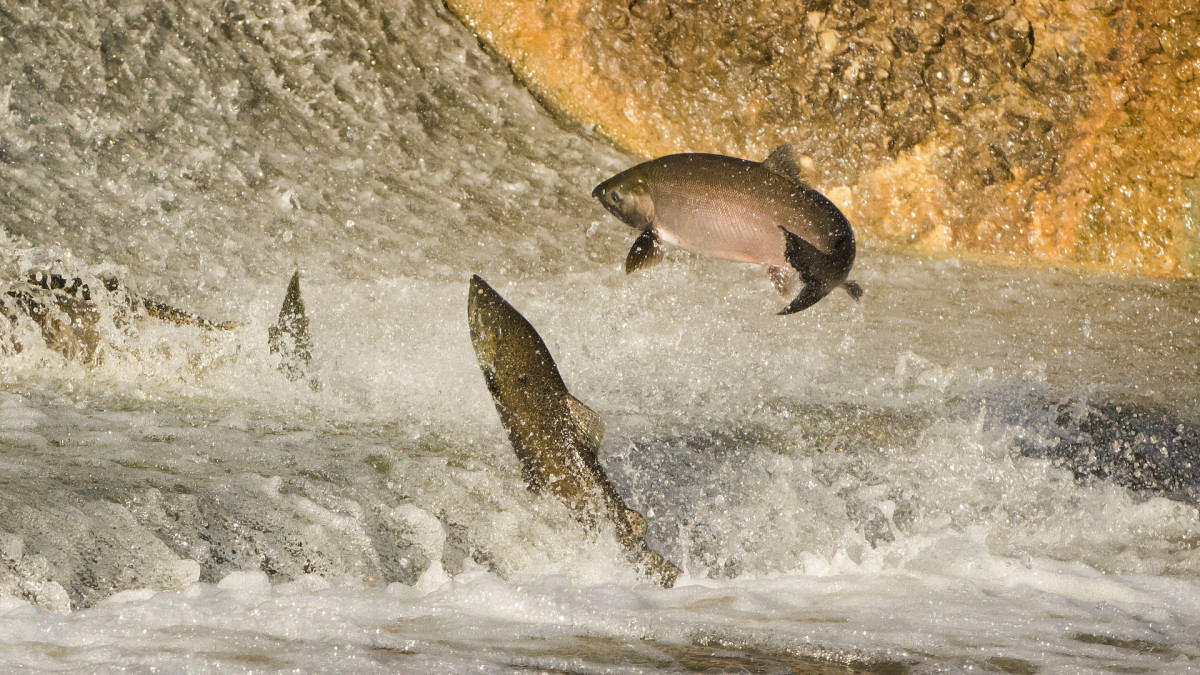
On December 14, the Biden administration announced a settlement with Oregon, Washington, and four Pacific Northwest tribes, agreeing to direct $1 billion toward recovering salmon populations and developing clean energy alternatives in the region over the next 10 years. The long-term goal of the settlement, filed in a district court in Oregon but still awaiting court approval, is to build the infrastructure needed to eventually breach four energy-producing dams on the Snake River.
The agreement has been met with mixed enthusiasm—even among the tribes who took part in the negotiations. Supporters of the plan are spinning it to mean setting the stage for dam removal, while to those more skeptical, it means once again delaying removal to an indefinite date.
Shannon Wheeler, chair of the Nez Perce Tribe put a positive angle on it with a press release via the Confederated Tribes of the Umatilla Indian Reservation. “We appreciate President Biden’s commitment to honor Tribal Treaties, and to work in partnership to restore healthy, abundant salmon throughout the Columbia Basin,” he said.
But personally, Wheeler isn’t thrilled with the settlement. “I don’t like this agreement,” he told The Seattle Times. “Because we are placed last again, the fish are last, everybody else is made whole before we even get to take a step. Irrigators are ahead of us, transportation is ahead of us, even tourism is ahead of us.” Many entities, including the tribes, view dam-breaching as the only way to truly revitalize salmon runs in the region—which they rely on as a key cultural and economic driver—and feel brushed aside as a result.
The new agreement does address fish, just not to the extent the tribes were hoping it would. Bonneville Power Administration (BPA)—the federal entity responsible for the power grid in the Pacific Northwest—will invest $300 million over the next ten years to native fish restoration projects. Of the money, $100 million is to be directed to the tribes for habitat work, and the remainder is to be used on fish hatchery improvements, upgrades, and maintenance.
Also important for fish, the deal sets standards for the amount of water to be released overtop the dams, which can aid salmon migration up and down the river system. Under the deal, spillage will increase in spring to help juvenile fish migrate downstream but will be reduced in the summer and fall to allow for increased power production, which BPA can sell at a higher profit to California. It’s an interim solution to breaching the dams, but one that advocates hope will keep salmon populations viable for the foreseeable future.
Perhaps more important for dam removal, however, are efforts the agreement makes to bring tribes to the forefront of energy development in the region. Currently, the four Snake River dams in question produce about 933 megawatts of energy every year, which is a significant portion of the cumulative 14,000 megawatts produced by a larger network of hydro dams in the Columbia Basin. But where the Snake River dams really come in handy is during large hot or cold waves: when energy demand spikes in the Pacific Northwest, the dams can temporarily ramp up production.
Already, Washington Governor Jay Inslee and Senator Patty Murray have made clear that alternative infrastructure must be in place before breaching can be considered. That not only means energy infrastructure but also irrigation and water storage provided by the reservoirs, as well as replacements for barge transportation to and from the Oregon coast to Lewiston, Idaho. According to a report last year, it would cost between $10 and $27 billion to fully replace all services.
The new agreement paves the way to do just that, directing money to the development of tribally-sponsored clean energy projects like wind and solar. The hot, dry, and windy Columbia plateau is already speckled with wind farms, but money from the agreement could bolster existing efforts. “Everything we need to replace those projects is already deployed commercially,” Nancy Hirsh, executive director for the NW Energy Coalition, said in a press release. “It’s not at the scale we need right now.”
To meet the capacity requirements needed to breach the dams, the region would need to add 1,960 megawatts of solar resources and 980 megawatts of battery storage, according to BPA. But even if the region is able to meet those numbers (and build out additional transportation and irrigation infrastructure), it would still take congressional approval to remove the dams, as they are operated by the U.S. Army Corps of Engineers.
For staunch salmon advocates, however, the ten-year agreement is too little, too late. NOAA has already published dire predictions for salmon populations in the Snake River Basin, some of which are at 0.1% of historical abundance levels. The highest, fall chinook, is at 1.8% of historical abundance.
Punting the issue down the road is a temporary solution, and the agreement has no guarantees that the dams will be removed if all the objectives are achieved. In all, it’s an extremely complex issue, and what tangible results will come of the agreement remain to be seen in the next decade.





Conversation